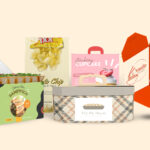Creating an effective brochure is essential for any marketing campaign, and one of the most important factors to consider is the size of your brochure. In this brochure sizing guide, we will explore different sizes and dimensions, helping you make an informed decision that aligns with your marketing goals and printing requirements.

Importance of Choosing the Right Brochure Size
Choosing the right size for your brochure is crucial for ensuring it meets your business needs and effectively communicates your message. Different sizes cater to different purposes, whether it’s for direct mail, promotional events, or informational handouts. Understanding these sizes helps optimize design and print quality.
Standard Brochure Sizes
There are several standard sizes used in brochure design, each serving a particular function:
1. Tri-Fold Brochure
The most popular option, the tri-fold brochure is typically 8.5 x 11. It’s compact yet offers ample space for information, perfect for general use.
2. Half-Fold Brochure
This brochure measures 8.5 x 11 when folded, providing a more booklet-style format that’s suitable for a presentation-like feel.
3. Z-Fold Brochure
Measuring the same 8.5 x 11, the z-fold brochure offers a unique way of presenting information with its zig-zag format.
Understanding Non-Standard Brochure Sizes
In addition to standard sizes, there are non-standard options that can highlight creativity:
4. Large Format Brochure
These are typically 11 x 17 or even larger. They provide more space for graphics and detailed information, ideal for impactful storytelling.
5. Mini or Small Brochure
Often 4 x 6, these are great for concise information and are budget-friendly options for wide distribution.
Factors to Consider When Selecting Brochure Size
- **Purpose**: What is the primary goal of the brochure?
- **Content**: How much information needs to be presented?
- **Distribution**: How and where will the brochure be distributed?
Design Implications of Brochure Size
The size of your brochure will affect its design elements. Consider how images, text, and negative space will be distributed across the pages to maintain visual appeal.
Cost Considerations
Larger and non-standard sized brochures can cost more to produce. It’s important to balance size with budget constraints without compromising on quality.
Packaging and Mailing Needs
If your brochure is part of a mailing campaign, ensure it fits standard envelopes to avoid additional shipping costs.
Print Quality
The choice of printing methods and materials also depends on size. Refer to our reliable brochure printing guide for more insights.
Distribution Venues
Where you distribute your brochures can influence the size you choose. Event handouts might favor smaller sizes for ease of handling, whereas in-store displays might opt for larger formats for visibility.
Environmental Considerations
Smaller, efficiently designed brochures can reduce paper waste and be more eco-friendly. Check our information about brochure ink types for sustainable options.
Trends in Brochure Design Sizes
Explore current trends in brochure sizing to stay updated on what is popular and effective in todays market. Our glossy brochure printing page provides the latest styles.
Customized Brochure Solutions
Consider custom sizing solutions for a unique appeal tailored to specific projects or products. For innovative uses, look into our brochures for product launches.

Frequently Asked Questions
What is the best size for a brochure?
The best size depends on your specific needs, purpose, and how much information you want to convey. For most general uses, a standard tri-fold size of 8.5 x 11 is popular.
Can I use non-standard sizes for brochures?
Yes, non-standard sizes like mini or large format brochures can be effective, especially if you want to stand out or present more detailed information.
How do I determine the content fit for my brochure size?
Plan your content layout according to the brochure size, ensuring ample space for images and text. Tools like brochure templates can help visualize the fit.
Understanding these key aspects of the brochure sizing guide will assist you in making informed decisions, helping you craft brochures that are not only visually appealing but also effectively communicate your message to your target audience.
This article contains affiliate links. We may earn a commission at no extra cost to you.






